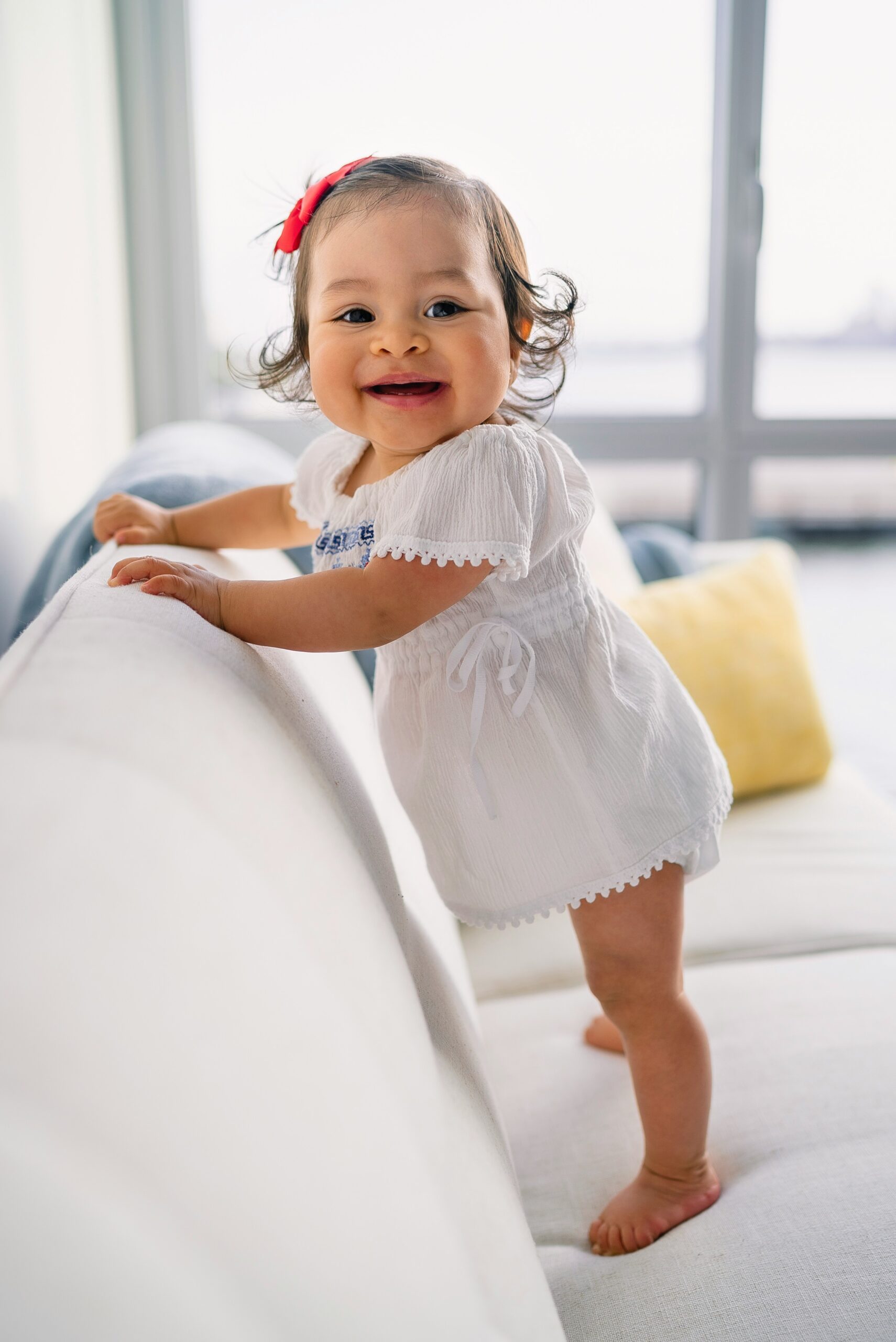The first year of your baby’s life is full of exciting changes, both for you and your little one. As a parent, it can feel overwhelming trying to keep up with all the milestones your baby will reach in such a short amount of time. From the first smile to taking their first steps, these milestones mark significant developments in your baby’s physical, emotional, and cognitive growth. In this guide, we’ll break down what to expect during your baby’s first year, including key milestones to watch for in each stage.
1. The Newborn Stage (0-2 Months)
In the first few weeks of life, your baby is adjusting to the world outside the womb. During this time, they are primarily focused on eating, sleeping, and bonding with you. Here are some important milestones to look for:
- Reflexes: Babies are born with certain reflexes such as the Moro reflex (startle reflex), rooting reflex (turning their head when their cheek is touched), and grasp reflex (gripping your finger).
- Vision and Hearing: Your newborn can see about 8-12 inches in front of them and will start to recognize your voice and face.
- Movement: Babies will begin to move their arms and legs in a jerky way. They may start to lift their head briefly when on their tummy.
2. The Early Infancy Stage (2-4 Months)
As your baby grows, they become more alert and begin to interact more with their environment. Expect to see the following milestones:
- Head Control: Around 3-4 months, babies will start to have better head control. They may be able to hold their head steady while sitting with support.
- Social Smiles: Your baby will begin to smile in response to your face, and may start to laugh or coo, showing signs of social interaction.
- Tummy Time Progress: Tummy time becomes increasingly important. By 4 months, your baby may push up on their arms, lift their chest, and start to roll over.
3. The Middle Infancy Stage (4-6 Months)
At this point, your baby is becoming more active and engaging with the world around them. Key milestones to look out for include:
- Rolling Over: Most babies will roll over from front to back and vice versa during this stage.
- Sitting Up: With support, your baby may begin to sit up for short periods.
- Grasping and Reaching: Your baby will start reaching for toys and objects. They may also begin to grasp things, holding onto them briefly.
- Babbling: Babies begin to babble at this stage, making sounds like “ba-ba” or “da-da,” though they may not be saying actual words yet.
4. The Late Infancy Stage (6-9 Months)
By now, your baby is becoming more mobile and communicative. This is an exciting period of rapid growth:
- Sitting Without Support: Many babies can sit up without support by 7-9 months, which allows them to explore their surroundings more easily.
- Crawling: Around 7-10 months, babies typically start crawling, though some may skip this stage and go straight to standing or walking.
- Fine Motor Skills: Your baby’s hand-eye coordination improves, allowing them to pick up small objects (using the “pincer grasp” with thumb and forefinger).
- First Words: Your baby may say simple words like “mama” or “dada,” and will likely understand some basic words and commands.
5. The Toddler Stage (9-12 Months)
Your baby is now almost a toddler, and the milestones keep coming fast. Expect to see your little one:
- Standing and Cruising: Around 9-12 months, many babies will start standing while holding onto furniture and “cruising” by walking along the furniture.
- First Steps: Some babies take their first independent steps between 9 and 12 months, but this can vary greatly from one child to another.
- Pointing and Gesturing: Your baby will likely start pointing at things they want or are curious about. They may also start using gestures like waving or clapping.
- Understanding Simple Commands: At this age, babies start to understand simple instructions like “wave bye-bye” or “give me the ball.”
6. Emotional and Social Development
Throughout the first year, your baby is also growing emotionally and socially. Some key developments include:
- Bonding with Caregivers: Your baby will develop a strong attachment to you and other caregivers, and will seek comfort from you when upset.
- Stranger Anxiety: Around 6-9 months, many babies experience stranger anxiety, becoming upset when around unfamiliar people.
- Imitation: By the end of the first year, your baby will begin to imitate actions they see others doing, such as clapping or waving.
Conclusion
The first year of your baby’s life is filled with incredible milestones that mark their physical, cognitive, and emotional growth. Every child develops at their own pace, so don’t be concerned if your baby reaches certain milestones a little earlier or later than others. The key is to offer plenty of love, support, and opportunities for growth. Enjoy each new stage and cherish the moments as your baby embarks on their journey toward becoming a toddler.
